Gregory D. Hager
Automated Surgical Activity Recognition with One Labeled Sequence
Jul 20, 2019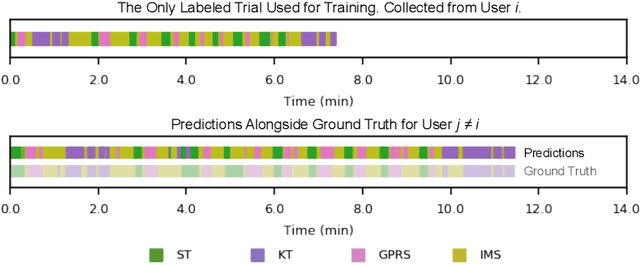
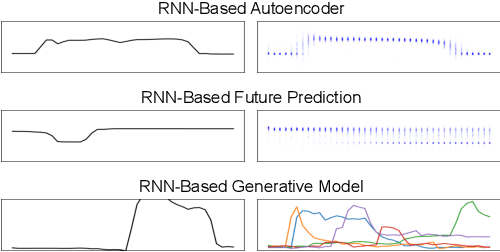
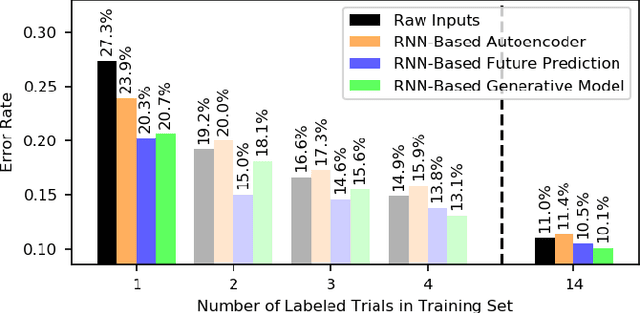
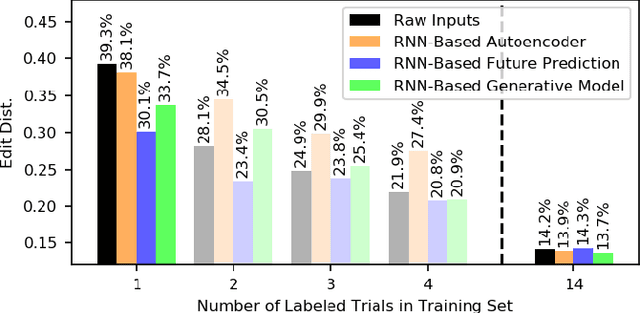
Abstract:Prior work has demonstrated the feasibility of automated activity recognition in robot-assisted surgery from motion data. However, these efforts have assumed the availability of a large number of densely-annotated sequences, which must be provided manually by experts. This process is tedious, expensive, and error-prone. In this paper, we present the first analysis under the assumption of scarce annotations, where as little as one annotated sequence is available for training. We demonstrate feasibility of automated recognition in this challenging setting, and we show that learning representations in an unsupervised fashion, before the recognition phase, leads to significant gains in performance. In addition, our paper poses a new challenge to the community: how much further can we push performance in this important yet relatively unexplored regime?
sharpDARTS: Faster and More Accurate Differentiable Architecture Search
Mar 23, 2019
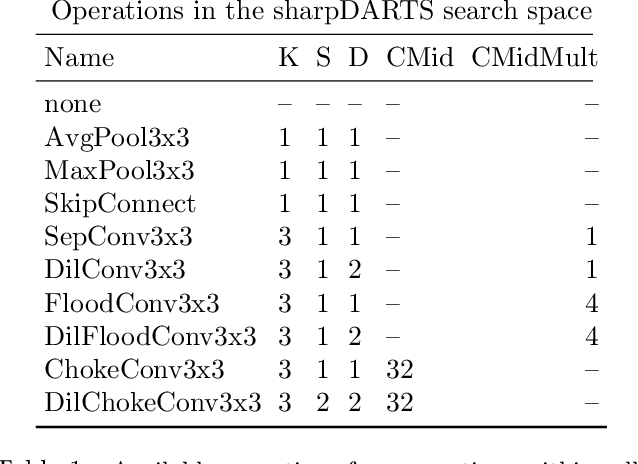
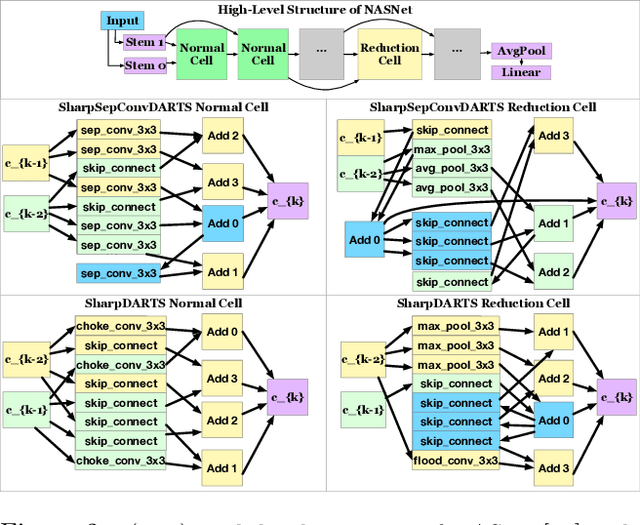
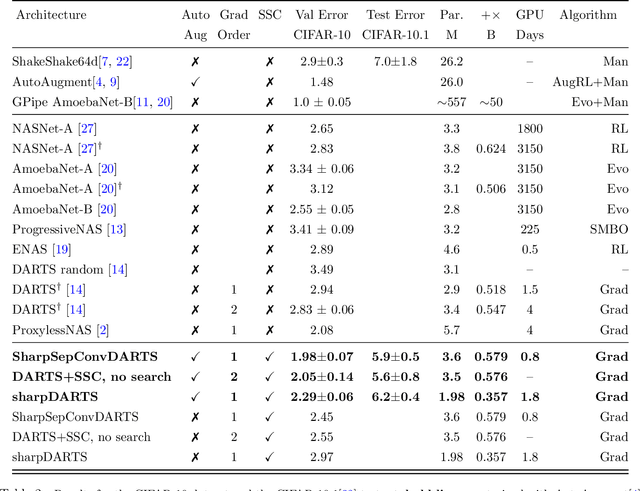
Abstract:Neural Architecture Search (NAS) has been a source of dramatic improvements in neural network design, with recent results meeting or exceeding the performance of hand-tuned architectures. However, our understanding of how to represent the search space for neural net architectures and how to search that space efficiently are both still in their infancy. We have performed an in-depth analysis to identify limitations in a widely used search space and a recent architecture search method, Differentiable Architecture Search (DARTS). These findings led us to introduce novel network blocks with a more general, balanced, and consistent design; a better-optimized Cosine Power Annealing learning rate schedule; and other improvements. Our resulting sharpDARTS search is 50% faster with a 20-30% relative improvement in final model error on CIFAR-10 when compared to DARTS. Our best single model run has 1.93% (1.98+/-0.07) validation error on CIFAR-10 and 5.5% error (5.8+/-0.3) on the recently released CIFAR-10.1 test set. To our knowledge, both are state of the art for models of similar size. This model also generalizes competitively to ImageNet at 25.1% top-1 (7.8% top-5) error. We found improvements for existing search spaces but does DARTS generalize to new domains? We propose Differentiable Hyperparameter Grid Search and the HyperCuboid search space, which are representations designed to leverage DARTS for more general parameter optimization. Here we find that DARTS fails to generalize when compared against a human's one shot choice of models. We look back to the DARTS and sharpDARTS search spaces to understand why, and an ablation study reveals an unusual generalization gap. We finally propose Max-W regularization to solve this problem, which proves significantly better than the handmade design. Code will be made available.
The CoSTAR Block Stacking Dataset: Learning with Workspace Constraints
Mar 12, 2019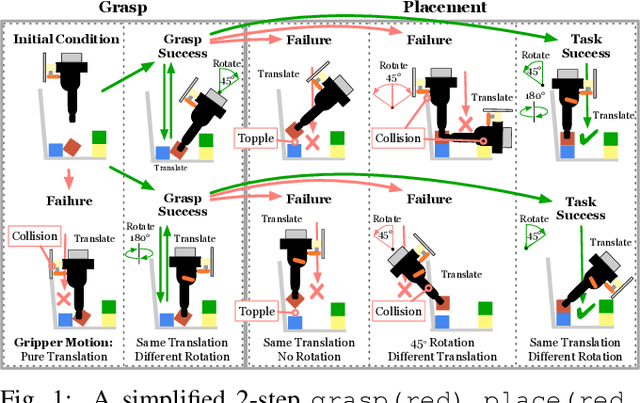

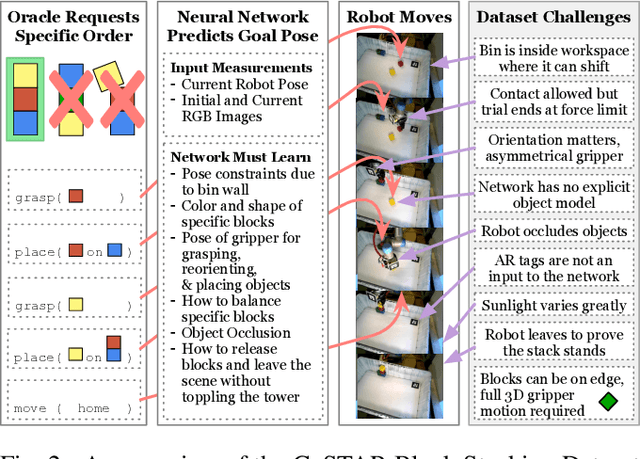

Abstract:A robot can now grasp an object more effectively than ever before, but once it has the object what happens next? We show that a mild relaxation of the task and workspace constraints implicit in existing object grasping datasets can cause neural network based grasping algorithms to fail on even a simple block stacking task when executed under more realistic circumstances. To address this, we introduce the JHU CoSTAR Block Stacking Dataset (BSD), where a robot interacts with 5.1 cm colored blocks to complete an order-fulfillment style block stacking task. It contains dynamic scenes and real time-series data in a less constrained environment than comparable datasets. There are nearly 12,000 stacking attempts and over 2 million frames of real data. We discuss the ways in which this dataset provides a valuable resource for a broad range of other topics of investigation. We find that hand-designed neural networks that work on prior datasets do not generalize to this task. Thus, to establish a baseline for this dataset, we demonstrate an automated search of neural network based models using a novel multiple-input HyperTree MetaModel, and find a final model which makes reasonable 3D pose predictions for grasping and stacking on our dataset. The CoSTAR BSD, code, and instructions are available at https://sites.google.com/site/costardataset.
Self-supervised Learning for Dense Depth Estimation in Monocular Endoscopy
Feb 20, 2019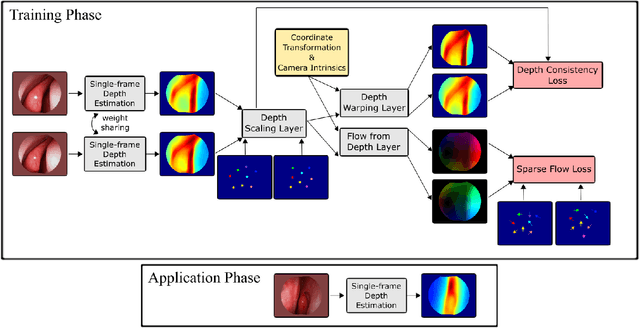
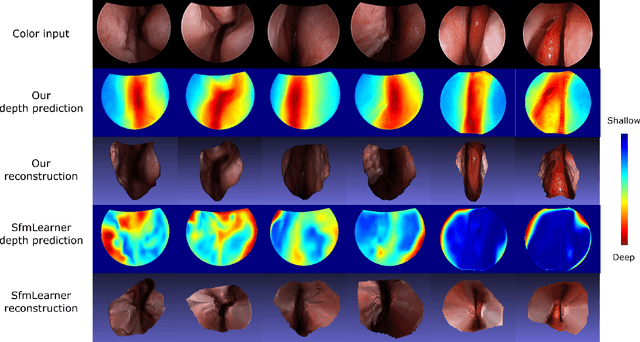
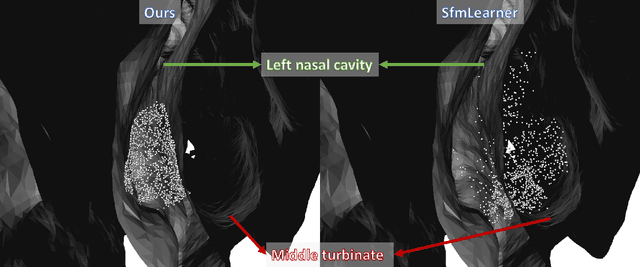
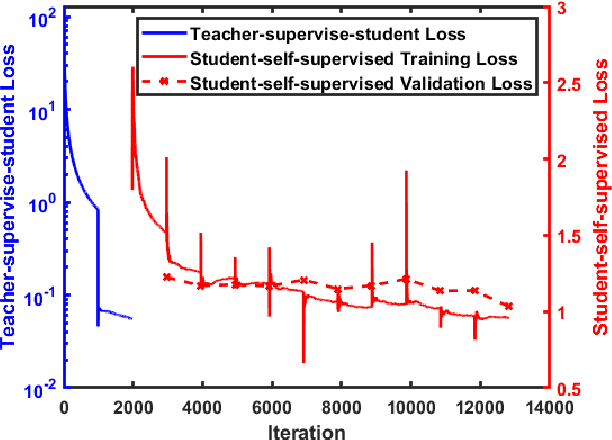
Abstract:We present a self-supervised approach to training convolutional neural networks for dense depth estimation from monocular endoscopy data without a priori modeling of anatomy or shading. Our method only requires monocular endoscopic video and a multi-view stereo method, e.g. structure from motion, to supervise learning in a sparse manner. Consequently, our method requires neither manual labeling nor patient computed tomography (CT) scan in the training and application phases. In a cross-patient experiment using CT scans as groundtruth, the proposed method achieved submillimeter root mean squared error. In a comparison study to a recent self-supervised depth estimation method designed for natural video on in vivo sinus endoscopy data, we demonstrate that the proposed approach outperforms the previous method by a large margin. The source code for this work is publicly available online at https://github.com/lppllppl920/EndoscopyDepthEstimation-Pytorch.
Evaluating Methods for End-User Creation of Robot Task Plans
Nov 06, 2018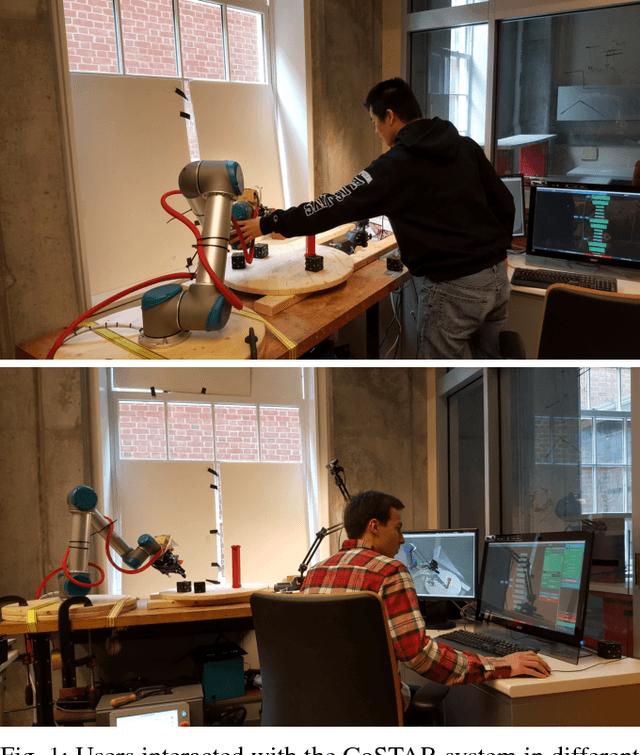
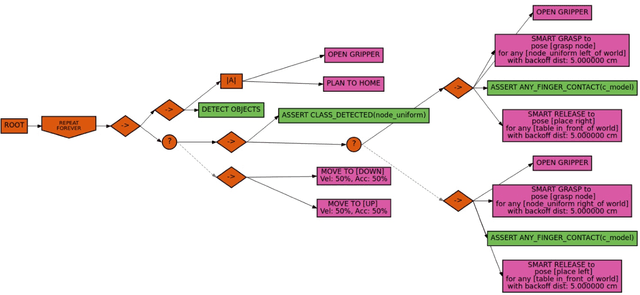
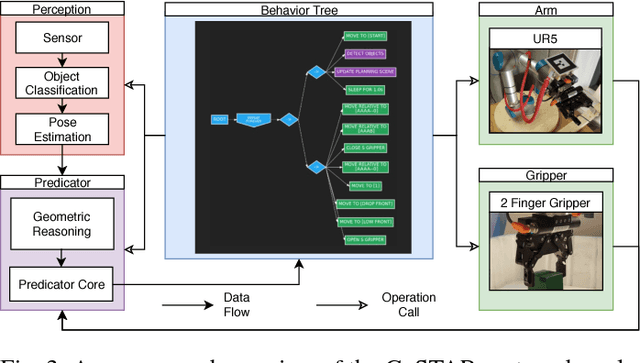
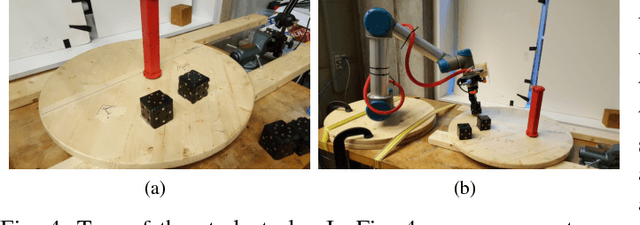
Abstract:How can we enable users to create effective, perception-driven task plans for collaborative robots? We conducted a 35-person user study with the Behavior Tree-based CoSTAR system to determine which strategies for end user creation of generalizable robot task plans are most usable and effective. CoSTAR allows domain experts to author complex, perceptually grounded task plans for collaborative robots. As a part of CoSTAR's wide range of capabilities, it allows users to specify SmartMoves: abstract goals such as "pick up component A from the right side of the table." Users were asked to perform pick-and-place assembly tasks with either SmartMoves or one of three simpler baseline versions of CoSTAR. Overall, participants found CoSTAR to be highly usable, with an average System Usability Scale score of 73.4 out of 100. SmartMove also helped users perform tasks faster and more effectively; all SmartMove users completed the first two tasks, while not all users completed the tasks using the other strategies. SmartMove users showed better performance for incorporating perception across all three tasks.
* 7 pages; IROS 2018
A Unified Framework for Multi-View Multi-Class Object Pose Estimation
Oct 06, 2018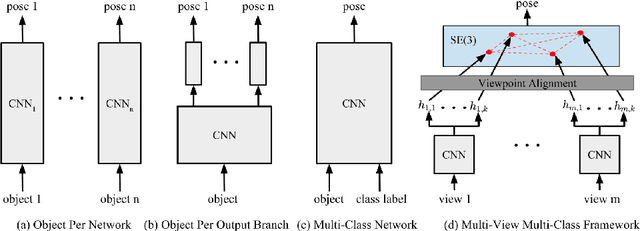
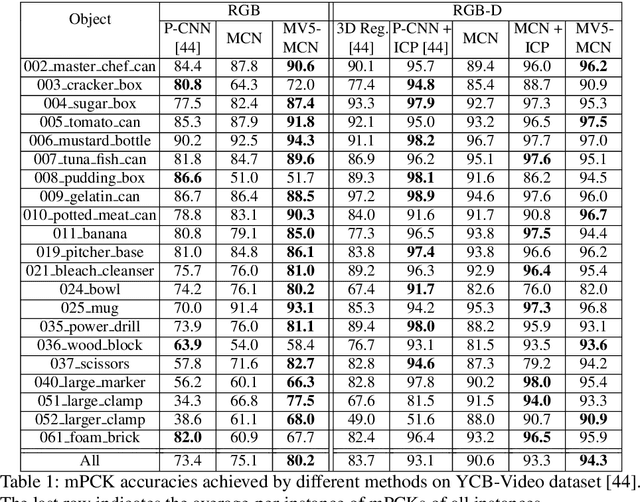
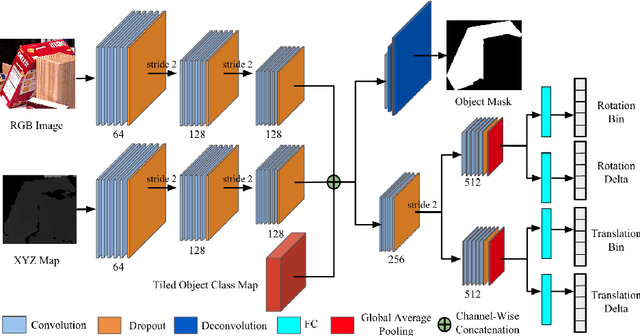
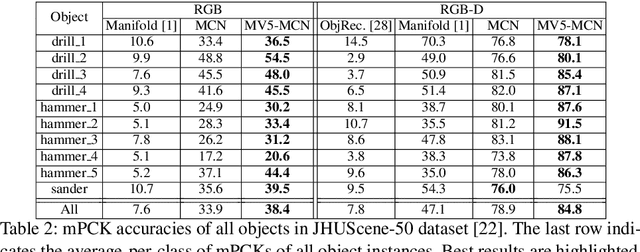
Abstract:One core challenge in object pose estimation is to ensure accurate and robust performance for large numbers of diverse foreground objects amidst complex background clutter. In this work, we present a scalable framework for accurately inferring six Degree-of-Freedom (6-DoF) pose for a large number of object classes from single or multiple views. To learn discriminative pose features, we integrate three new capabilities into a deep Convolutional Neural Network (CNN): an inference scheme that combines both classification and pose regression based on a uniform tessellation of the Special Euclidean group in three dimensions (SE(3)), the fusion of class priors into the training process via a tiled class map, and an additional regularization using deep supervision with an object mask. Further, an efficient multi-view framework is formulated to address single-view ambiguity. We show that this framework consistently improves the performance of the single-view network. We evaluate our method on three large-scale benchmarks: YCB-Video, JHUScene-50 and ObjectNet-3D. Our approach achieves competitive or superior performance over the current state-of-the-art methods.
Deep Supervision with Intermediate Concepts
Jul 20, 2018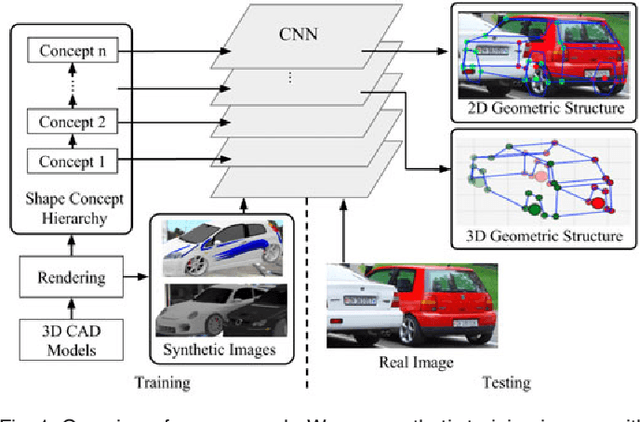
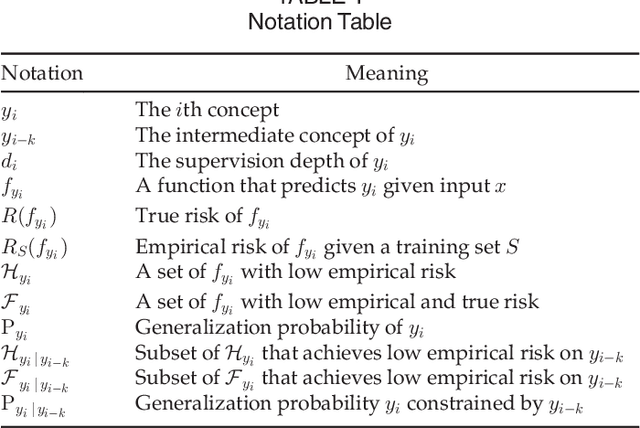
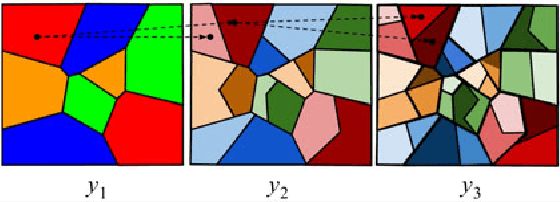
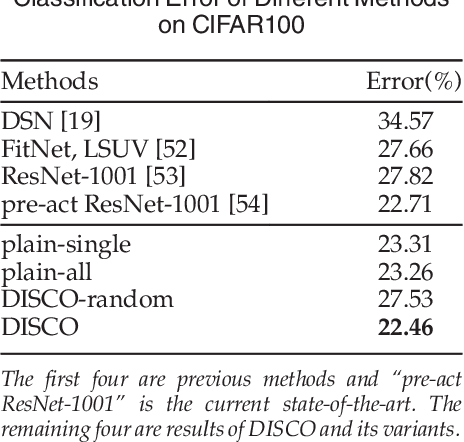
Abstract:Recent data-driven approaches to scene interpretation predominantly pose inference as an end-to-end black-box mapping, commonly performed by a Convolutional Neural Network (CNN). However, decades of work on perceptual organization in both human and machine vision suggests that there are often intermediate representations that are intrinsic to an inference task, and which provide essential structure to improve generalization. In this work, we explore an approach for injecting prior domain structure into neural network training by supervising hidden layers of a CNN with intermediate concepts that normally are not observed in practice. We formulate a probabilistic framework which formalizes these notions and predicts improved generalization via this deep supervision method. One advantage of this approach is that we are able to train only from synthetic CAD renderings of cluttered scenes, where concept values can be extracted, but apply the results to real images. Our implementation achieves the state-of-the-art performance of 2D/3D keypoint localization and image classification on real image benchmarks, including KITTI, PASCAL VOC, PASCAL3D+, IKEA, and CIFAR100. We provide additional evidence that our approach outperforms alternative forms of supervision, such as multi-task networks.
Towards automatic initialization of registration algorithms using simulated endoscopy images
Jun 28, 2018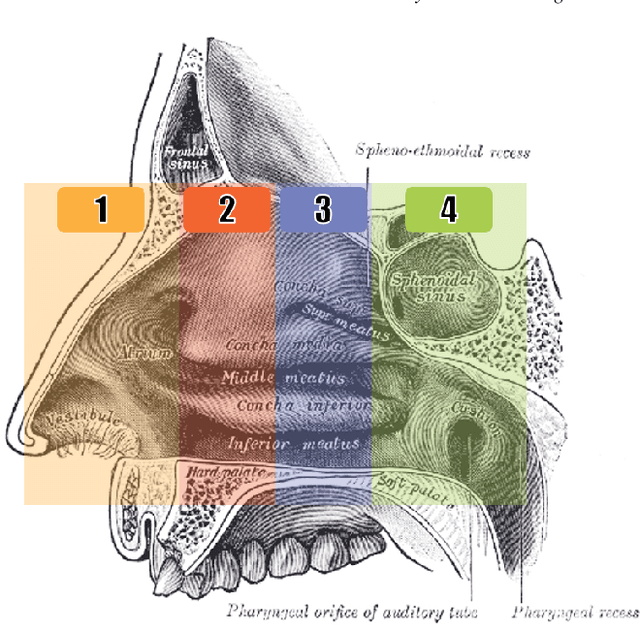
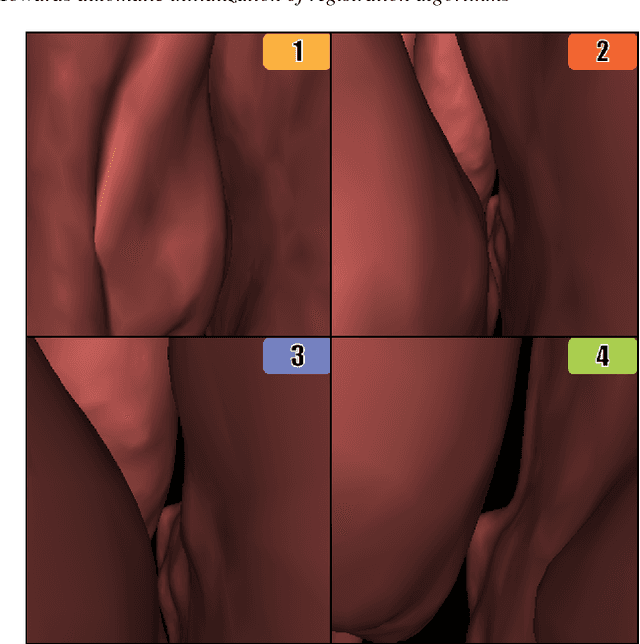
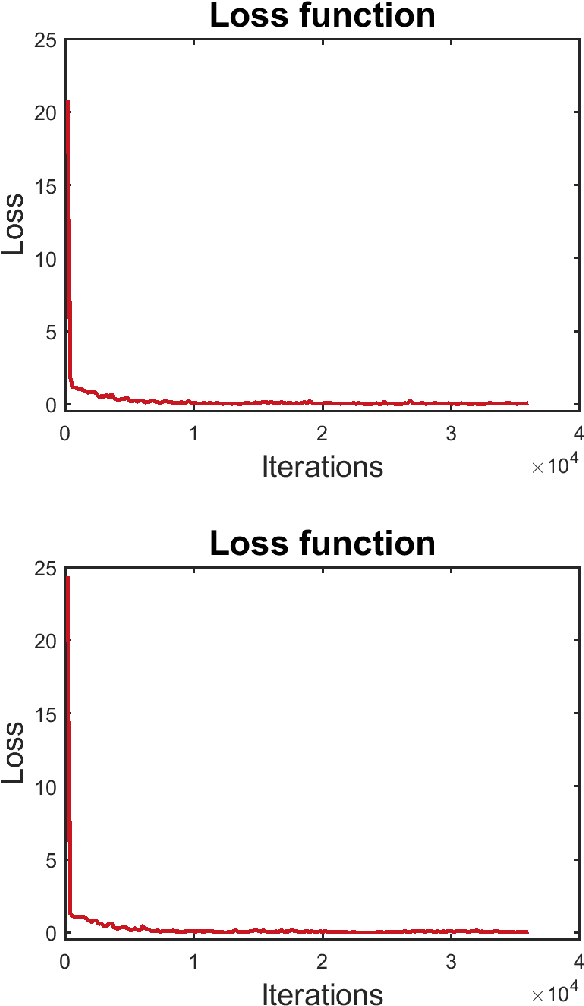
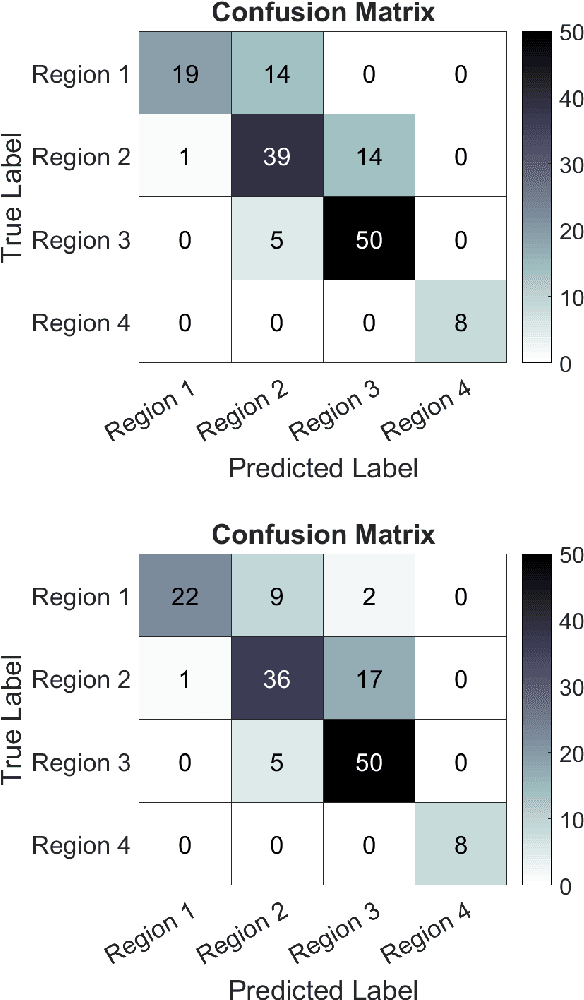
Abstract:Registering images from different modalities is an active area of research in computer aided medical interventions. Several registration algorithms have been developed, many of which achieve high accuracy. However, these results are dependent on many factors, including the quality of the extracted features or segmentations being registered as well as the initial alignment. Although several methods have been developed towards improving segmentation algorithms and automating the segmentation process, few automatic initialization algorithms have been explored. In many cases, the initial alignment from which a registration is initiated is performed manually, which interferes with the clinical workflow. Our aim is to use scene classification in endoscopic procedures to achieve coarse alignment of the endoscope and a preoperative image of the anatomy. In this paper, we show using simulated scenes that a neural network can predict the region of anatomy (with respect to a preoperative image) that the endoscope is located in by observing a single endoscopic video frame. With limited training and without any hyperparameter tuning, our method achieves an accuracy of 76.53 (+/-1.19)%. There are several avenues for improvement, making this a promising direction of research. Code is available at https://github.com/AyushiSinha/AutoInitialization.
Unsupervised Learning for Surgical Motion by Learning to Predict the Future
Jun 08, 2018
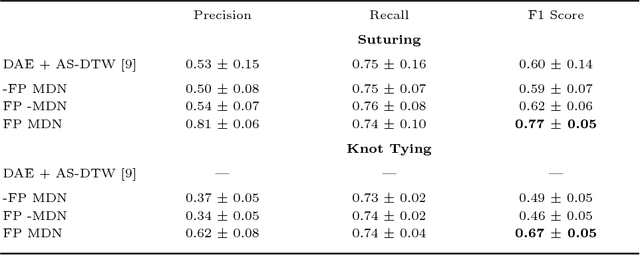
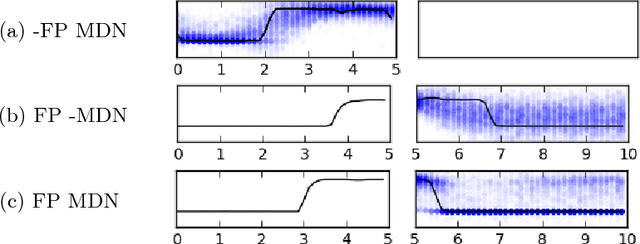
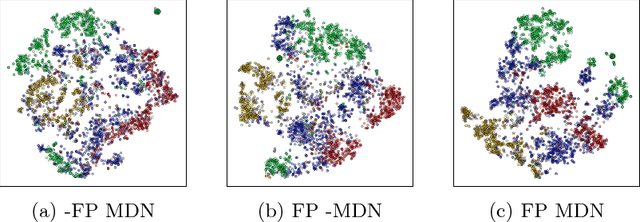
Abstract:We show that it is possible to learn meaningful representations of surgical motion, without supervision, by learning to predict the future. An architecture that combines an RNN encoder-decoder and mixture density networks (MDNs) is developed to model the conditional distribution over future motion given past motion. We show that the learned encodings naturally cluster according to high-level activities, and we demonstrate the usefulness of these learned encodings in the context of information retrieval, where a database of surgical motion is searched for suturing activity using a motion-based query. Future prediction with MDNs is found to significantly outperform simpler baselines as well as the best previously-published result for this task, advancing state-of-the-art performance from an F1 score of 0.60 +- 0.14 to 0.77 +- 0.05.
Endoscopic navigation in the absence of CT imaging
Jun 08, 2018


Abstract:Clinical examinations that involve endoscopic exploration of the nasal cavity and sinuses often do not have a reference image to provide structural context to the clinician. In this paper, we present a system for navigation during clinical endoscopic exploration in the absence of computed tomography (CT) scans by making use of shape statistics from past CT scans. Using a deformable registration algorithm along with dense reconstructions from video, we show that we are able to achieve submillimeter registrations in in-vivo clinical data and are able to assign confidence to these registrations using confidence criteria established using simulated data.
 Add to Chrome
Add to Chrome Add to Firefox
Add to Firefox Add to Edge
Add to Edge